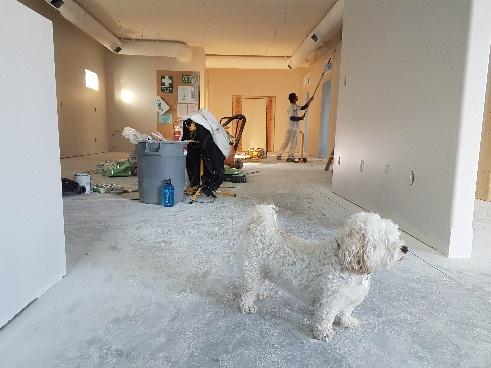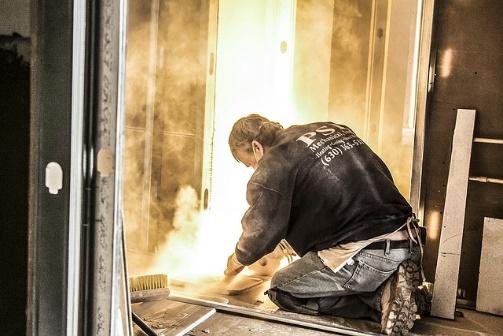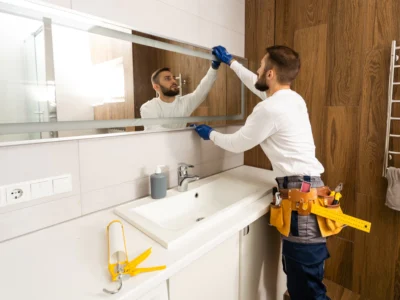Renovating is enough of a stress in itself, but when you’re still living in your home while it’s being remodeled, the intensity and challenges can ramp up considerably.
It’s vital to be strategic about how you go about things and take steps to mitigate risks and issues. Follow a few tips to make renovations and living onsite flow more smoothly.
Choose the Right Contractors
Things are tough enough when you’re living in a construction site, so the last thing you need is contractors who make more of a mess than necessary or arrive or leave at unexpected hours. It’s vital to choose the right builders and other tradespeople who will pick up after themselves, make less of a mess in the first place, and give you proper guidance on their daily start times, especially.
You also want people to provide approximate finish times so you can schedule relaxation time, phone calls, and other things you can’t do when there are contractors in your home making noise. Plus, if you have children in the house or live by yourself, you want to invite people in you can trust who won’t make you or your kids feel threatened or otherwise uneasy or unhappy.
Always read online testimonials and reviews of tradespeople before you hire them and, where possible, get in touch with some current or previous clients of the companies on your shortlist to get helpful feedback on the contractors you’re considering. Also, it pays to ask around your family members, friends, and colleagues for recommendations of excellent, reliable workers.
Set Some Ground Rules
When you’re living onsite when your home is going through major renovations, particularly if you’re home a lot and working there, you need to set some ground rules with tradespeople. Apart from discussing start and finish times, as mentioned above, talk about which days you’re comfortable with people coming to your home (you may require contractors to stay away on the weekends, for instance) and which areas they can access.
You may want to make some parts of your home off-limits to those working on the property, such as your bedroom, ensuite, office, and backyard to play frisbees. You might also need to request that they don’t start using power tools until a specific time of the day if you always have an early-morning meeting or have a baby you’re trying to keep on a sleep routine.
Move Non-Essential Items Away
Even the best, most careful tradespeople can have accidents where they spill paint or other supplies, drop things, trip, or where jobs otherwise don’t go as planned. In these cases, sometimes client possessions can get damaged or broken. It’s wise, then, to move non-essential items out of the rooms people are working in so there’s less chance of an issue.
You might move your most valuable items to the garage, for instance, or pack up a lot of smaller possessions into boxes and put them in the rooms where contractors aren’t going to be working or even in storage, if needed.
Cover Goods
Sometimes, things are too heavy, big, or bulky to move out of harm’s way. Other times, there are too many bits and pieces in an area to make it worth your time to move them all. In these instances, it’s necessary to protect goods and materials with drop sheets or other covers. For example, if you have tradespeople renovating your primary bedroom, you’ll want to place quality plastic sheeting across your bed so it doesn’t get dusty or stained. If you’ve just bought a brand-new latex mattress, the last thing you want is for it to get ruined unnecessarily.
Cover your bed up, plus things such as chests of drawers, bedside tables, televisions and other electronics, and artworks, if they can’t be moved. As for your closet, rather than taking everything out if it’s open and could get affected by the work tradespeople do, put plastic sheeting up over the hanging space to protect all your belongings.
Other ideas for making living onsite more palatable while having your home remodeled are:
- Set up designated living areas versus remodel areas, where possible
- Organize scheduling carefully so you can get everything done in one part of your home sooner and start living in it while other area spaces get worked on
- Keep a close eye on kids and pets to keep them safe from power tools, falling debris, etc., and out of the way of workers
- Plan for the work to take longer than expected (it always does!) but push contractors to hustle
- Get structural changes, investigation for asbestos, etc., carefully checked before work starts, so you don’t have any safety issues during the renovation that hold things up

- Take care of your mental health along the way by taking steps to de-stress
Following these tips will help you cope more effectively with all the noise, dust, dirt, and general chaos that comes from trying to live in a home while it’s being worked on.













Comments